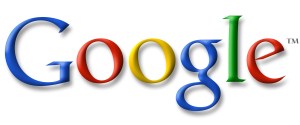Sony Takes Another Stab at a SmartWatch, This Time With NFC
Joining the race to build the next generation of “smart” watches, Sony Electronics earlier today announced its latest entrant at the Mobile Asia Expo in Shanghai.

Sony’s Smart Watch 2, like the company’s previous watch, is meant to interact with and display notifications from a smartphone, alerting wearers to phone calls, messages and email. It will also work with social media and fitness apps to provide updates from those arenas.
But the new device has a larger, higher-resolution touchscreen than its predecessor. In addition to Bluetooth connectivity, it will offer one-tap pairing through NFC (most of Sony’s high-end hardware, like the Xperia Z and the Xperia Tablet Z, includes NFC, so it’s not a huge surprise that the company would incorporate this technology). Sony promises the watch will have extended Android compatibility, working with devices beyond Sony’s Xperia smartphone line, and longer-lasting battery life of three to four days with typical usage.
Lastly! If you have a newer Walkman — yes, they still exist — the new Sony watch will act as a remote for that device.
Sony in recent days has been hinting at its plans for a new, connected wearable device, tweeting “tick-tock” from the official Sony Xperia account, along with an image of a watch.
The product’s name might lead consumers to believe that this is Sony’s second smart-watch product, but it’s actually the Japanese electronic giant’s third in the category. Sony’s first smart watch came out in 2007, and about a year ago, Sony introduced another — which I found to be less than intuitive in my review of the device.
Smart watches in recent months have become a hot, though still a rather elusive, topic in consumer technology. Tech giants such as Apple, Microsoft and Samsung are reported to be working on smart, wearable devices that would possibly sync up with users’ smartphones to receive notifications and offer app-like functions from the wrist.
As I mentioned, this type of wearable has been attempted before — by companies like Microsoft and Sony — with modest or minimal success. Device-makers still grapple with battery-life limitations in such a small form factor, and weigh different approaches to the same device: Whether it should be a complement to the smartphone, its own two-way communicator, a health monitor or all of the above.
For now, Sony is categorizing this as a “global” announcement, which means we still don’t know when this watch will come to the U.S. market. Sony also isn’t naming its price.
We do know, however, the smart watch will be available around the world starting in September of this year.






